5+ SAMPLE Annual Work Summary Report
-
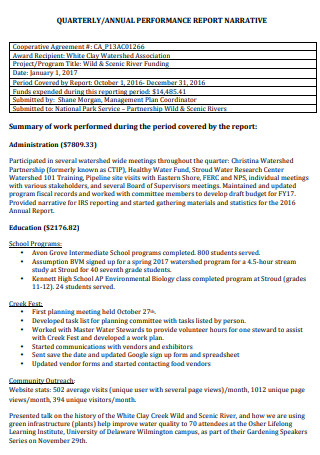
Annual Work Performance Summary Report
download now -
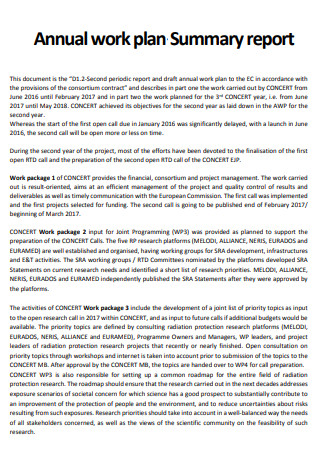
Annual Work Plan Summary Report
download now -
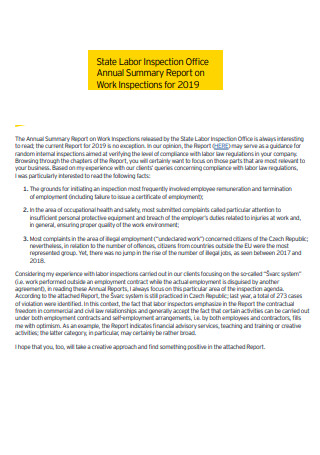
Annual Work Inspection Summary Report
download now -
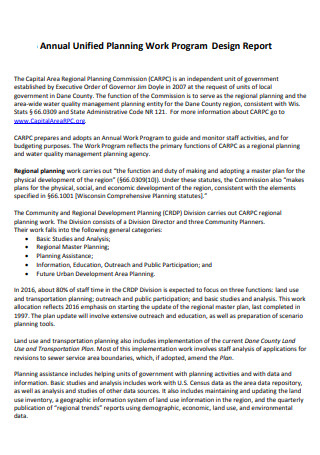
Annual Work Program Design Summary Report
download now -
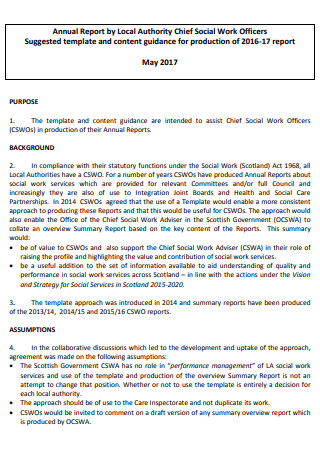
Annual Social Work Summary Report
download now -
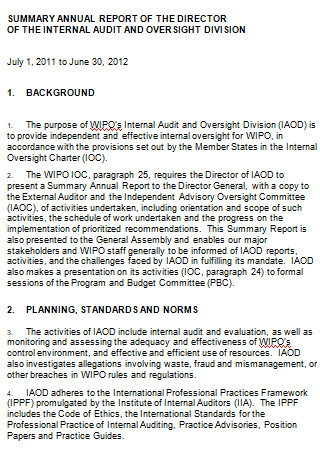
Internal Audit Annual Work Summary Report
download now
FREE Annual Work Summary Report s to Download
5+ SAMPLE Annual Work Summary Report
What is an Annual Work Summary Report?
Different Types of Annual Work Summary Report
Basic Features of a Annual Work Summary Report
How to Write a Annual Work Summary Report
FAQs
What are some examples of annual work summary reports?
What is the purpose of an annual work summary report?
What are the essential steps in writing an annual work summary report?
What is the difference
What is an Annual Work Summary Report?
An annual work summary report is a basic and well-detailed document that outlines the major activities and tasks performed by an employee throughout the whole year that must be summarized and reported on a yearly basis mandated by the management of the company or organization. This is a useful summary document in monitoring the overall annual progress of work projects and elevating the work efficiency and productivity rate of employees or workers, especially when it comes to formulating excellent decisions for the team or department.
According to a meta-analysis study, there exists 21% higher levels of profitability in business firms or work units that scored the top on employee engagement. Because of this, their highly engaged workforce scored 17% higher on productivity as well. Thus, all kinds of employees, project managers, team supervisors, and other working professionals in a wide range of fields and sectors should record their yearly work progress and accomplishments through an effective annual work summary report. Conducting this annual report writing process will bring their management’s attention to their valuable qualities in their annual work performance.
Different Types of Annual Work Summary Report
Developing summary reports is a beneficial method to tell readers the core points of the reports and they may use the summary reports to determine whether to read the entire work report, to get the gist of the report without reading it, or to preview the material prior reading it. Typically, a summary refers to a multi-paragraph document. In this section, you will know and understand more about the different types of annual work summary reports because your style and technique of writing an annual work summary report is determined by the type of annual work summary report you are creating. To assist you, we will explain about the different types of annual work summary reports below:
1. Annual Work Inspection Summary Report
A statistical report showed that the incidence rate of fatal occupational injuries per 100,000 employees in 2015 was recorded at 3.8% and this means that there were around 4 cases of occupational injuries with work days lost per 1,000 workers during the year. Do you need to carefully inspect some particular tasks and activities of your project or work in your company or organization? An annual work inspection summary report is an organized document that provides a clear and systematic documentation of primary activities of an employee throughout a specific time period. It consists of summarized details about certain work inspection activities to highlight annual work incidents or accomplishments. Generally, an annual work inspection summary report contains important information to reach equitable, inclusive and sustainable development, especially in covering incidence rates of occupational injuries and diseases in work establishments, numbers of days lost incurred by workers due to workplace injuries and diseases, extent of labor inspectorate involved in the enforcement of labor standards in establishments and number of inspected establishments with violations on general labor standards and occupational safety and health standards.
2. Annual Work Program Design Summary Report
Based on the book Designing and Managing Programs: An Effectiveness-Based Approach, developing successful work program designs is supported with a sound theoretical base as professional work program practitioners prefer to present logical and systematic methods in building fundamental elements of program design. Moreover, designing work programs and services for effectiveness involves collection of the kinds of data that will support responsiveness to funding source mandates for accountability. This will allow work program evaluators to check and measure whether the work programs are acquiring the desired outcomes.
The management’s utilization of evidence defines the parameters within which evidence will be gathered, how it will be aggregated, and how it will be used for monitoring, performance measurement, and program evaluation. Thus, designing work programs that can be evaluated means collecting quantified data on service provision and client response. The major elements or considerations in setting work programs for businesses and organizations are efficiency and effectiveness. It is crucial to define the elements that will go into work program construction. Business firms or organizations should plan in advance to set goals and objectives and to provide clear definitions of services to be provided and results expected. Usually, work programs go through periodic checkups which include data analysis, use of benchmarks, and comparison to best practices and annual summary report writing. By writing a clear annual summary report for work program design, work program developers are able to determine the continuing effectiveness of a certain work program and relevance in a changing environment.
3. Annual Social Work Summary Report
Mental health clinics, schools, child welfare and human service agencies, hospitals, settlement houses, community development corporations, and private practices are several diverse settings where social workers commonly work. They assist people in solving and coping with problems in their daily lives. Additionally, they do the following tasks: identifying people and communities in need of help, assessing the needs, situations, and strengths and supporting networks to determine their goals, helping clients adjust to changes and challenges in their lives, researching, referring and advocating for community resources, responding to crisis situations, following up with clients to make sure that their situations have improved, maintaining case files and records, developing and evaluating programs and services to ensure the basic needs of clients are reached, and providing psychotherapy services. Some types of social workers are child and family social workers, school social workers, healthcare social workers, and mental health and substance abuse social workers. According to statistics, the number of people employed as social workers has been growing at a rate of 2.32% from 850,907 people in 2016 to 870,626 people in 2017 and social workers employed by various industries such as industrial and family services, administration of human resource programs, and hospitals. Thus, creating a simple and organized annual social work summary report is essential to keep track of the annual work performance of social workers.
4. Internal Audit Annual Work Summary Report
Based on a statistical report, more than 28% indicated permanent internal audit staff levels increased over the past year and almost half of respondents indicated that internal audit provides assurance on risk management as a whole and more than 57% provide advice and consulting on risk management activities.In order to help the infrastructure of a company in ensuring smooth operations and compliance with laws and regulations, an effective internal auditor audits fiscal statements, expense reports, inventory and many others that needs to be impeccable in case of an external audit conducted by a governmental regulatory body. One of the key aspects of internal auditing is asset protection through risk management: ranging from fraud and legal exposure to internal policy lapses and mismanagement. A simple internal audit annual work summary report is beneficial when it comes to documenting risk assessments for each department in the company or organization.
Basic Features of a Annual Work Summary Report
In this section, you will learn how to construct a remarkably written and well-designed annual work summary report. However, an annual work summary report has different features. Include the following elements for you to create a well-structured document:
How to Write a Annual Work Summary Report
These days, various types of workers and other professionals in business firms and organizations structure their own annual work summary reports in assorted forms and layouts. Writing an annual work summary report is an effective method to carefully monitor and manage the key elements of the business firm or organization and other work projects that should be completed. Below are some easy-to-follow tips that indicate how to design and create a professional annual Work summary report:
-
Step 1: Look for the Basic Summary Report Template and Follow Instructions
Search for the simple template of summary reports for you and other workers in the Company or organization. It doesn’t need to have an intricate, overwhelming and over-the-top design. Find some inspiration in several digital design platforms like our website that provides eclectic types of reports, forms, and other documents for business professionals and other people. Also, always consider to follow the instructions of your management accordingly when it comes to writing your annual work summary report.
-
Step 2: Plan the Structure of the Report
Consider planning the overall structure of the annual work summary report according to the standards of your business firm or organization’s management. This will guide you in writing the core information and help your team supervisor and project manager to comprehend the things you placed in the summary document. Make sure that any design elements and colors that you implemented in the work summary report are positioned aesthetically.
-
Step 3: Create an Executive Summary of the Annual Work Accomplishments
Take a look at the specific tasks and activities that you have accomplished in the overall year. List down all of them as you create a summary. Then, develop a simple and clear timeline of the tasks and activities already finished in the business or project at the year-end. Include the specific time, day, and date, as well as other necessary details.
-
Step 4: Write with Conciseness and Accuracy
To maintain efficiency in your usage of words, avoid repetition of common points several times in your work report. So, keep it more concise. If you need to include some numerical figures in the work report, be sure that the numbers are accurate and correspond with the task entrusted to you at work.
-
Step 5: Proofread and Revise the Overall Report
Examine your overall annual work summary report. Be sure to fully include all the major aspects that the Management of your company or organization requires. If you notice that you overlook some sections that need more points, we suggest that you proofread and revise the document right away.
-
Step 6: Prepare the Final Annual Work Summary Report
After the proofreading and revision process, you can now prepare the final annual work summary report. Include some Notes and other essential messages you want to inform the management on the conclusion of your document. Skim your report for final evaluation and quality check.
FAQs
What are some examples of annual work summary reports?
Some examples of annual work summary reports are annual work inspection summary report, annual work program design summary report, annual social work summary report, internal audit annual work summary report, company financial statements annual summary report, annual work performance summary report, annual work incident summary report, annual work accomplishment report, and more.
What is the purpose of an annual work summary report?
The purpose of an annual work summary work report is to demonstrate the annual or yearly growth and work accomplishments of an employee through defining specific tasks, activities, and other project completions. It also measures the overall work performance in the business firm or organization in the entire year.
What are the essential steps in writing an annual work summary report?
Begin your annual work summary report by writing the header. Then, include an executive summary or overview section of the yearly accomplished tasks, activities and other project or work completions performed by an employee for the company or organization. Then, add the major details of the summary. Develop a clear timetable to list down all the annual work and project accomplishments.
What is the difference between an annual work summary report and a productivity report?
An annual work summary report is a document which indicates yearly or year-end accomplished tasks and activities of an employee in the business firm or organization. On the other hand, a productivity report is a document that provides a comprehensive analysis of productivity over a certain period of time based on the collected data from several metrics. It will guide the project managers and team supervisors in acquiring a clear and broad perspective of employee productivity.
Written communication skills are valued in every profession, from a teacher to a business executive to an auditor and more. Therefore, writing a clear and well-structured annual work summary report for your business firm or organization is a beneficial method when it comes to measuring and evaluating annual work performance, measuring strengths and weaknesses, building up work reputation, especially in promoting efficiency and productivity at work. Plus, it allows everyone to appreciate their work progress and obtain positive feedback and recognition. So, here are some of our downloadable and printable annual work summary report samples available in different kinds of document formats such as annual progress report template, financial statements report sample, year end report templates, executive summary template, etc. Simply click the annual work summary report templates in this article and start downloading now!
